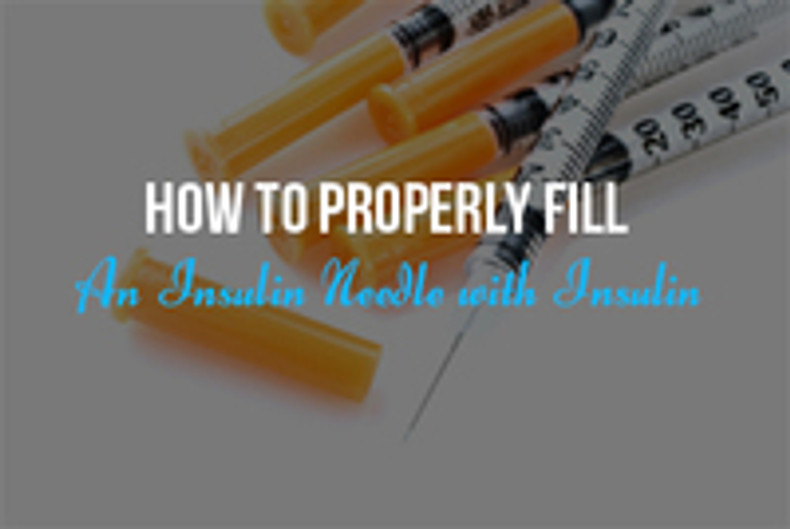 Once you have chosen the correct insulin needle for self-injection, the steps are simple to draw up the solution.
Once you have chosen the correct insulin needle for self-injection, the steps are simple to draw up the solution.
Before inserting the needle, you will need to roll the vile in your hands for several seconds. It is important to remember not to shake the vile because air bubbles can give an inaccurate reading in your syringe. After washing your hands, carefully wipe the top of the vile with an alcohol swab. Then, you may follow these simple steps to accurately fill a needle with insulin.
- Open the insulin needle from its packaging.
- Twist and remove the orange cap of the needle carefully, ensuring not to touch the needle with your hands or to any surfaces.
- Carefully pull back the plunger to the amount of insulin you want to draw out. This allows you to inject enough air into the vile to withdraw the appropriate amount of insulin easily.
- Insert the needle carefully through the rubber top of the insulin bottle and inject the air from the syringe.
- While carefully holding the syringe in your hand (still inserted into the vile), turn both upside down, and withdraw the proper amount of insulin into the syringe by carefully pulling back on the plunger. Be sure that the needle inside the vile is below the liquid level of the insulin so that you aren't drawing up lots of air.
- If you've accidentally withdrawn an air bubble, tap the sides of the syringe until the air bubble dissipates. If this doesn't work, you can re-inject the insulin into the vile and redraw the insulin while the needle is still inside. Small air bubbles are not necessarily dangerous; however, it will affect the accuracy of your dose.
- Remove syringe from the vile and perform injection.
- When finished, dispose of the needle and syringe properly.
Tips to remember:
Re-inserting a needle through the rubber cap will dull the needle. These syringes are intended for a one time use.Injecting cold insulin will sting, so it is best to wait until the insulin has warmed up before injecting.
When you are diabetic, insulin injections can be a matter of life and death; making sure that the injections are done correctly can make a significant difference in ensuring that you’re getting the proper dosage. You’ll see greater health and financial benefits by using the exact dosage that’s been prescribed. To do so, make sure you’re first using the correct gauge needle and a clearly-marked syringe.
Take your vial and, before inserting the needle, roll it back and forth in your hands for a few seconds to break down any air bubbles. Shaking the vial could cause air bubbles to form, which can cause under-dosing of your insulin. Wipe the top with an alcohol swab to make sure the site is sterile.
Open the needle and remove it from the packaging, being careful not to touch the needle with your hands or any other surfaces. Hold the vial upside down, and insert the needle into the vial. Push in the plunger to inject the air that will get the insulin moving, and then pull the plunger back down. If you’ve inserted the correct amount of air, the plunger will often fill on its own, with little to no effort needed to pull the plunger back out. If you find you’ve withdrawn an air bubble, tap the sides of the syringe to break it up; you can also re-inject the insulin into the vial and re-draw the insulin. Perform the injection and then properly dispose of the needle and syringe.


